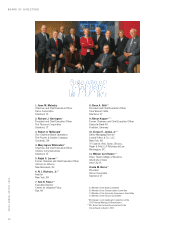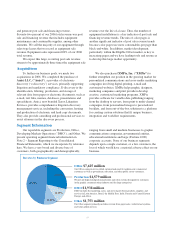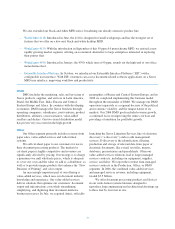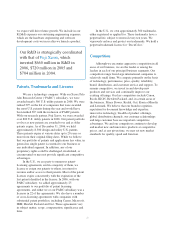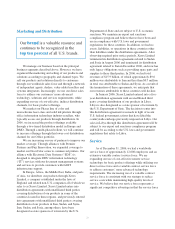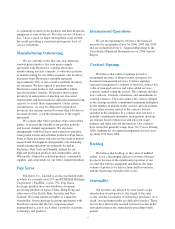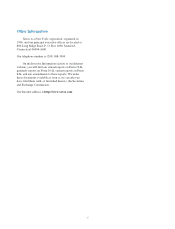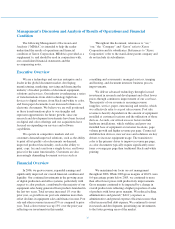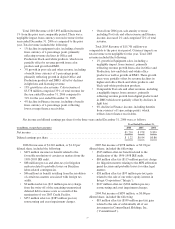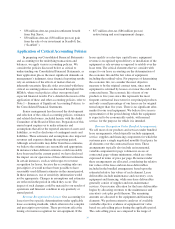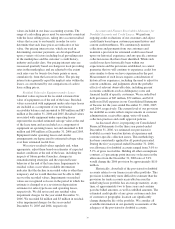Xerox 2006 Annual Report Download - page 24
Download and view the complete annual report
Please find page 24 of the 2006 Xerox annual report below. You can navigate through the pages in the report by either clicking on the pages listed below, or by using the keyword search tool below to find specific information within the annual report.
we expect will drive future growth. We include in our
R,D&E expenses our sustaining engineering expenses,
which are the hardware engineering and software
development costs we incur after we launch a product.
Our R&D is strategically coordinated
with that of Fuji Xerox, which
invested $660 million in R&D in
2006, $720 million in 2005 and
$704 million in 2004.
Patents, Trademarks and Licenses
We are a technology company. With our Xerox Palo
Alto Research Center (“PARC”) subsidiary, we were
awarded nearly 560 U.S. utility patents in 2006. We were
ranked 39th on the list of companies that were awarded
the most U.S. patents during the year and would have
been ranked 36th with the inclusion of PARC patents.
With our research partner, Fuji Xerox, we were awarded
over 800 U.S. utility patents in 2006. Our patent portfolio
evolves as new patents are awarded to us and as older
patents expire. As of December 31, 2006, we held
approximately 8,300 design and utility U.S. patents.
These patents expire at various dates up to 20 years or
more from their original filing dates. While we believe
that our portfolio of patents and applications has value, in
general no single patent is essential to our business or
any individual segment. In addition, any of our
proprietary rights could be challenged, invalidated, or
circumvented or may not provide significant competitive
advantages.
In the U.S., we are party to numerous patent-
licensing agreements, and in a majority of them, we
license or assign our patents to others, in return for
revenue and/or access to their patents. Most of the patent
licenses expire concurrently with the expiration of the
last patent identified in the license. In 2006, with our
PARC subsidiary, we added approximately 25
agreements to our portfolio of patent licensing
agreements, and either we or our PARC subsidiary was a
licensor in 22 of the agreements. We also have a number
of cross-licensing agreements with companies with
substantial patent portfolios, including Canon, Microsoft,
IBM, Hewlett Packard and Océ. Those agreements vary
in subject matter, scope, compensation, significance and
time.
In the U.S., we own approximately 560 trademarks,
either registered or applied for. These trademarks have a
perpetual life, subject to renewal every ten years. We
vigorously enforce and protect our trademarks. We hold a
perpetual trademark license for “DocuColor.”
Competition
Although we encounter aggressive competition in all
areas of our business, we are the leader or among the
leaders in each of our principal business segments. Our
competitors range from large international companies to
relatively small firms. We compete primarily on the basis
of technology, performance, price, quality, reliability,
brand, distribution, and customer service and support. To
remain competitive, we invest in and develop new
products and services and continually improve our
existing offerings. Our key competitors include Canon,
Ricoh, IKON, Hewlett-Packard, and, in certain areas of
the business, Pitney Bowes, Kodak, Océ, Konica-Minolta
and Lexmark. We believe that our brand recognition,
reputation for document knowledge and expertise,
innovative technology, breadth of product offerings,
global distribution channels, our customer relationships
and large customer base are important competitive
advantages. We and our competitors continue to develop
and market new and innovative products at competitive
prices, and, at any given time, we may set new market
standards for quality, speed and function.
22


